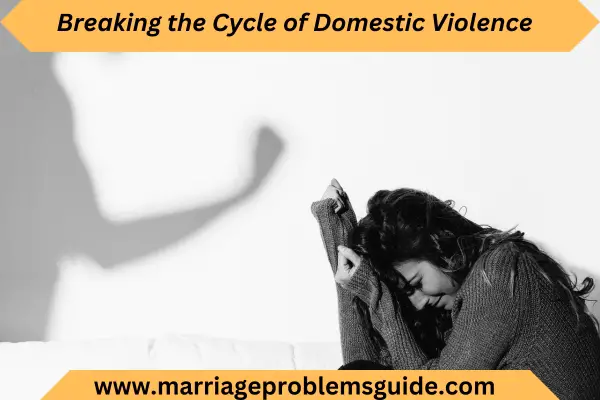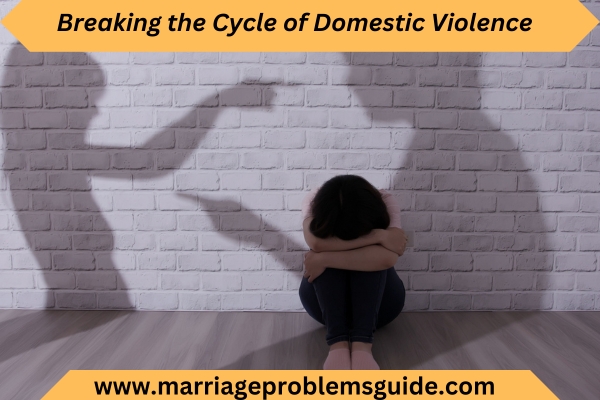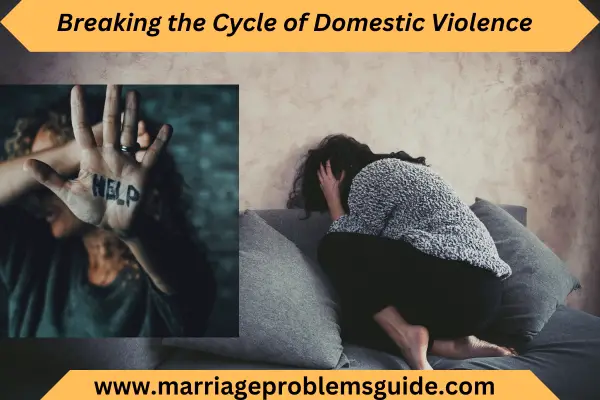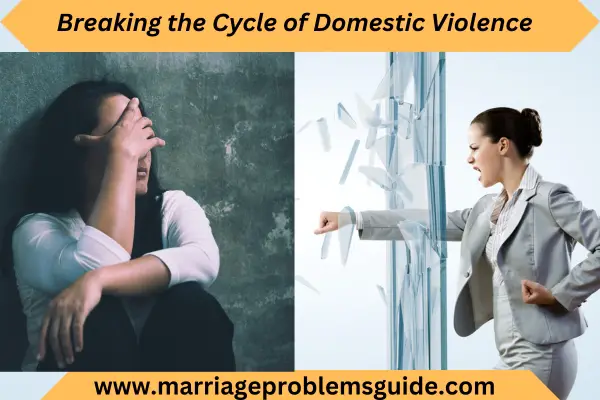Breaking the Cycle of Domestic Violence
Domestic violence is a devastating issue that affects millions of people worldwide. Also known as intimate partner violence, domestic abuse refers to a pattern of violent or controlling behavior by one partner against the other in an intimate relationship.
While both men and women can be victims, the overwhelming majority of domestic violence is perpetrated by men against women.
Domestic violence can take many forms, including physical, sexual, emotional, psychological and financial abuse. It can happen to anyone regardless of age, race, religion, socioeconomic status or sexual orientation.
However, leaving an abusive relationship is extremely difficult and the abuse often becomes a vicious cycle that spans generations.
In this blog article, we will provide you information and resources to help victims break free from domestic violence safely. we will speak about:
- Understanding the cycle of abuse
- Barriers to leaving
- Safety planning
- Finding support through counselling, support groups and domestic violence organizations
- Legal protections and steps to take
- Rebuilding your life after abuse
With help and support, it is possible to break the cycle of domestic violence. You have the right to a safe and happy life, free from fear.

Understanding the Cycle of Abuse
Domestic violence often follows a predictable pattern known as the cycle of abuse. This cycle involves three main phases:
-
Tension Building Phase
This phase begins with minor incidents that gradually escalate over time. The abuser starts to get angry easily over small issues and begins to criticize, threaten or undermine the victim. Tension continues building until it erupts in an act of physical, emotional or verbal abuse.
-
Explosive Phase
During this phase, the abuse occurs through violent outbursts. It may be physical, sexual or emotional abuse. The abuser releases all the built-up tension from the first phase. After the explosive incident, the abuser is apologetic and tries to make amends by showering the victim with apologies, gifts and promises.
-
Honeymoon Phase
The honeymoon phase provides the positive reinforcement to continue the relationship. The abuser expresses remorse, promises to change and may try to shift the blame onto the victim.
The abuser may use threats to prevent the victim from leaving. The victim wants to believe the abuse is over and things will get better. But the cycle soon repeats.
This continual rotation of abuse results in a trauma bond forming between the victim and abuser. The power and control dynamics make it very difficult for the victim to leave.

Barriers to Leaving an Abusive Relationship
Ending the cycle of abuse is extremely hard. Many complex psychological, emotional and external barriers prevent victims from leaving, including:
- Fear – Victims may be terrified of retaliation and escalated attacks if they try to leave. The most dangerous time is when separating from an abusive partner.
- Guilt – Victims often blame themselves for the abuse and try to justify their partner’s actions.
- Normalization – When abuse happens gradually over time, it can become normalized. Victims lose perspective on what constitutes a healthy relationship.
- Lack of financial resources – Financial dependence on the abuser due to lack of education, employment and income can trap victims.
- Social isolation – Abusers often isolate victims from family and friends to increase dependence.
- Cultural/Religious reasons – Social stigma, victim blaming and concepts like salvaging the family unit at all costs can pressure victims to stay.
- False promises – Abusers often promise to change and convince the victim to stay after abusive incidents.
- Low self-esteem – The constant abuse chips away at the victim’s self-worth, making them feel powerless.
- Concerns for children – Victims try to keep the family together for children’s sake and minimize trauma.
Despite these challenges, victims can overcome barriers and break free with proper support and safety planning.

Safety Planning to Leave an Abusive Relationship
Safety planning is vital when preparing to leave an abusive partner to avoid severe retaliation. Here are some important safety tips:
- Identify safe areas at home like bathrooms with locks where you can retreat in case of violence. Avoid rooms with potential weapons like kitchens.
- Have a packed bag ready with essential documents, clothes, medication and spare cash. Store it at a trusted friend or neighbor’s place.
- Memorize emergency phone numbers or program them into a spare secret phone.
- Secure alternative housing whether it’s with family or at a domestic violence shelter.
- Ask neighbors to call the police if they hear suspicious noises and inform landlords about the situation.
- Review your safety plan with children and have a code word to communicate distress.
- Line up a restraining order from courts against the abuser if needed.
- Change all passwords and PINs so the abuser cannot access accounts, documents or track your phone.
- Be very careful when reaching out for help via Internet or telephone to avoid tipping off the abuser. Maintain vigilance after leaving the relationship as separation increases danger.
Finding Support to Escape Domestic Violence
Ending abuse can feel very isolating but support is available through both informal and formal channels:
- Counselling and Therapy
Counselling with a domestic violence advocate or licensed mental health professional can help deal with the psychological impact of abuse, reduce isolation and strengthen self-esteem and inner resources.
-
Support Groups
Support groups allow victims to share experiences, challenges and successes with others who understand the situation. Peer support provides healing, hope and community.
-
Domestic Violence Organizations
Local domestic violence organizations are at the forefront of providing comprehensive services to victims. This can include emergency shelter, legal advocacy, counselling, crisis support, transitional housing and programs for children. The National Domestic Violence Hotline provides referrals.
-
Friends and Family
Informal support from trusted friends, colleagues and family members is invaluable when planning to leave an abusive relationship. They can provide emotional support, temporary housing, financial assistance and help with childcare.
Legal Protections for Domestic Violence Victims
There are laws and legal remedies available to increase safety like:
- Restraining orders – Victims can obtain court orders prohibiting abusers from contacting, approaching or assaulting them. Violating a restraining order results in criminal charges.
- Child custody – Courts consider domestic violence when making child custody determinations. Supervised visitation or suspending custody may be options.
- Divorce and asset division – Domestic abuse is factored when deciding alimony and asset division.
- Immigration – Under the Violence Against Women Act, abused immigrant spouses can self-petition for lawful residency without relying on the abuser.
- Housing assistance – Victims cannot be denied housing or evicted due to domestic violence incidents. Landlords may have to change locks to enhance safety.
Consult a domestic violence advocate or attorney to understand all available legal remedies in your state.
Rebuilding Your Life after Domestic Violence
Leaving an abusive partner is just the first step in reclaiming your life. With support, strength and a safety net, victims can move towards a healthier, more hopeful future. Here are some tips:
- Seek ongoing counseling and join support groups to process trauma, boost resilience and prevent regression.
- Take legal steps to ensure safety like obtaining restraining orders if required and staying vigilant.
- Lean on trusted friends and family for emotional support during this transition.
- Establish financial independence through education, job training and career planning.
- Find safe, stable housing and relocate if needed to avoid the abuser.
- Make new social connections through community, religious and hobby groups when ready.
- Be a positive role model for your kids and have open conversations to break the cycle.
- Practice self-care through therapeutic techniques like journaling, exercise, meditation and mindfulness.
- Consider volunteering or joining survivor advocate groups to empower others.
The road to rebuilding your life may not be easy or linear but recovery is possible with determination and support.
Conclusion
Domestic violence causes immense physical and emotional trauma with long-lasting effects. Although extremely difficult, victims can break free from abuse by understanding the cycle, safety planning, utilizing support services and legal protections and starting the rebuilding process.
Social attitudes must also change to support instead of blaming victims. With societal support and personal courage, the cycle of violence can end. Learn here more about domestic violance guide and tips.


